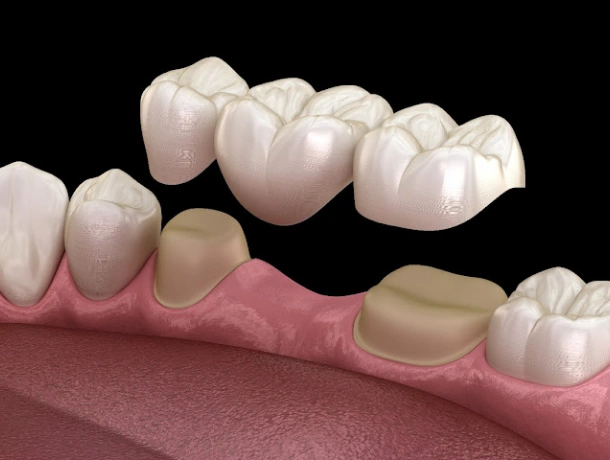Emergency & New Patients Welcome!

Replacing Missing Teeth: Fixed Bridges as a Solution
Missing tooth can lead to shifting of neighboring teeth, supra-eruption of opposing teeth making the overall bite uneven permanently.
Those shifted and tilted teeth leads to food lodgment, caries or gum infection. We all know that Implant should be first choice to replace a missing tooth but sometimes it can not be done due to medical conditions or simply unavailability of proper volume and shape of the bone where tooth has been missing. Fixed Bridges help in such cases to replace a missing tooth faster than ever.
A Durable Solution for Missing Teeth
A dental bridge is a fixed (non-removable) appliance that effectively replaces missing teeth.
There are several types of bridges, and you and your dentist will determine the best option for your specific needs. The most common is the “traditional bridge,” typically made of porcelain fused to metal. This type consists of two crowns placed over the anchoring teeth (abutment teeth) with artificial teeth (pontics) filling the gap left by missing teeth.
Dental bridges are highly durable and can last many years; however, they may need replacement or re-cementing due to normal wear over time.
Reasons for a fixed bridge:
Fill the gaps from missing teeth.
Maintain your facial shape.
Prevent adjacent teeth from shifting.
Restore your ability to chew and speak.
Enhance your smile.
Upgrade from a removable partial denture to a permanent solution.
What does getting a fixed bridge involve?
Getting a dental bridge typically involves two or more visits. During the first appointment, the anchoring teeth are numbed and prepared by removing a portion of enamel for the crowns. An accurate impression (mold) is then taken and sent to a dental laboratory to create your bridge. In the meantime, a temporary bridge will be placed and worn for several weeks.
At the second visit, your permanent bridge will be carefully checked, adjusted, and cemented for a proper fit. In some cases, your dentist may initially use temporary cement to allow your teeth and gums to acclimate before permanently cementing the bridge later.
After the procedure, you will receive care instructions. Proper brushing, flossing, and regular dental visits will help extend the life of your new bridge.